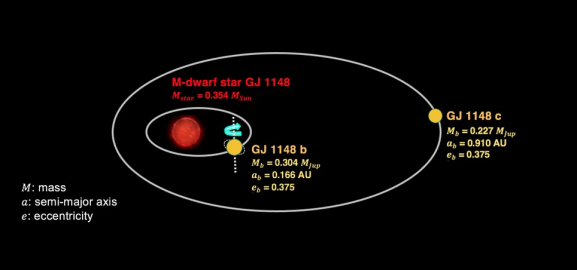 HKU Department of Earth Science
HKU Department of Earth Science
Seminar

Origin and evolution of the orbits and spins of the giant planets in the GJ 1148 system
-
Date
September 20,2022
-
Time
2:00PM
-
Venue
JL105
-
Speaker
Mr. Longhui YUAN Department of Earth Sciences, HKU
The GJ 1148 is an M-dwarf star with two Saturn-mass planets orbiting around it. Dynamical analysis shows that the two planets have moderately eccentric and well-separated orbits. In this study, we first explore the origin of the GJ 1148 system under the planet-planet scattering scenario, assuming the presence of a third planet in the original system. The post-ejection two-planet systems have similar properties to the GJ 1148 system. The optimal semi-major axis of the initial innermost planet ai,1depends on the mass of the ejected planet. When the mass of the ejected planet is in the range of 0.1-0.227Mjup, the optimal ai,1 should be in the range of 0.21 - 0.29 AU. The spin evolution of the inner planet GJ 1148 b with and without the outer planet GJ 1148 c was investigated with constant Q and Δt tidal model. It shows that the spin rate of GJ 1148 b does not change significantly in response to the secular variation of eccentricity because the secular timescale is much smaller than the spin-down timescale. As we systematically move both planets closer to the star by multiplying the semi-major axes by a factor β, the time scales get close to each other and the spin evolution is increasingly affected by the eccentricity oscillation. In addition, we revisit the problem of the in situ scattering of warm Jupiters studied by Anderson et al. (2020). Our simulation results with both N-body integrators SyMBA-GR and REBOUND suggest that most post-ejection two-planet systems are stable, and the absence of such outcomes in their results may not be correct.
Additional information: Mr. Longhui YUAN, yuanlh@connect.hku.hk
